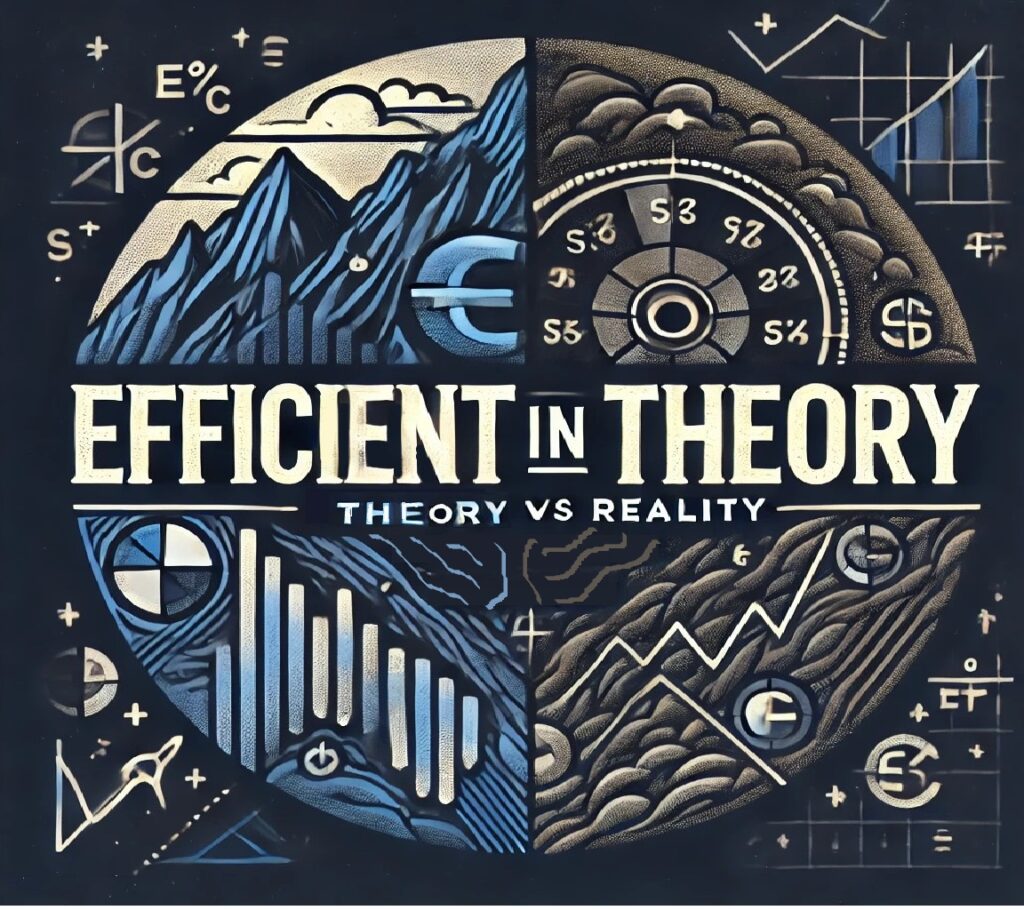Do Financial Theories Hold True In Reality?
We Will FIND OUT!
This is the sole purpose of this blog, to do every day analysis on current market events. People have probably done this before but we want to do it in our own way and we hope you enjoy the journey 🙂
We’ve all been taught the theories CAPM, Efficient Markets, Modern Portfolio Theory, and so on in school, and in the professional world. Whether you learned them in a finance class, read about them in a book, or heard them tossed around on CNBC, these theories and principles are meant to help us understand how markets work. But if you’ve spent any real time investing or even just watching the market you know things rarely play out exactly as the textbooks suggest.
So how well do these financial theories actually hold up in the messy, unpredictable real world? Let’s dig in.
1. How Are Assets Really Priced?
Theories try to map this out with neat equations, but the market doesn’t always play along. There are lots of methods to evaluate asset prices such as these examples:
• CAPM (Capital Asset Pricing Model)
• APT (Arbitrage Pricing Theory)
• Fama-French & Carhart Models
• ICAPM / CCAPM
We’re going to try and go into these or similar models to take a look at the market and try to make sense of any predictable movement or diversion from the formula or just the basic principles these formulas give us. Don’t worry we will explain the formulas and theories as we go to keep you in the loop.
2. Do Markets Really Reflect All Available Information?
The Efficient Market Hypothesis (EMH) says yes—prices already reflect all known information. But anyone who’s watched a meme stock double in a week knows that’s not the full story. These are some more examples of theories we may explore as we go.
• EMH (Efficient Market Hypothesis)
• Random Walk Theory
• Information Asymmetry & Grossman-Stiglitz Paradox
3. Behavioral Finance: Where the Human Element Comes In
Here are some examples of Behavioral Finance theories we may explore:
• Prospect Theory
• Overreaction & Underreaction
• Noise Traders & Mental Accounting
Not everyone in the market is doing DCF models in Excel. Many are trading on headlines, Reddit threads, or instinct. Something models don’t account for.
Bottom Line: If you ignore investor psychology, you miss half the story. Behavioral finance doesn’t give neat formulas, but it helps explain a lot of real-world craziness.
5. Valuation Models
Valuation models are everywhere we will possibly look at these for particular stocks or even on a more broad basis for example looking at how particular asset classes are performing compared to their model outcomes and expectations.
• Dividend Discount Model (DDM)
• Discounted Cash Flow (DCF)
A favorite in corporate finance
• Multi-Factor Models (like Barra)
These are used by quant funds to explain returns using dozens of variables.
6. What About Options and Complex Instruments?
Derivative pricing is another highly theoretical area—especially models like Black-Scholes.
• Black-Scholes Model
• Binomial Model
In future posts, I’ll take a deeper look at how these theories stack up against actual market events—and where they fall short.

Leave a Reply